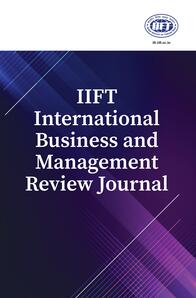
1Sri Aurobindo College, University of Delhi, New Delhi, India
This perspective seeks to unearth the crucial trends and patterns of manufacturing, employment and exports in the socio-economically critical Indian textile industry. The period of analysis is broadly from 2000–01 to 2015–16, 2017–18 and 2020–21. Using available empirical and literary evidence, the viewpoint tries to elicit the causes, consequences and future policy implications of the study for the sector. All in all, given the stagnant and even declining trends on manufacturing, employment and export fronts, it is suggested that the industry stakeholders ranging from textile firm owners to policymakers adopt suitable and structurally superior digital technologies of production such as Artificial Intelligence, Internet of Things and 3D while also balancing with the prevalent welfarist objectives of employment and equity. The sector is vital for many other sections (such as women) and sectors (such as environment), which makes it all the more imperative to have suitable policies and incentive structures in place that could ensure a high growth and sustainable textile development pattern in the coming future.
Indian textile industry, manufacturing, employment, environment, exports, women, digitalization
Arora, T. (2015). Employment-export elasticities for the Indian textile industry (Working Paper 349). Institute for Social and Economic Change, Bangalore. https://ideas.repec.org/p/sch/wpaper/349.html
Balassa, B. & Noland, M. (1989). Revealed comparative advantage in Japan and the United States. Journal of International Economic Integration. 4(2): 8–22. doi: 10.11130/jei.1989.4.2.8. JSTOR 23000034
Kanupriya. (2020a). Digitalization and the Indian textiles sector: A critical analysis. FIIB Business Review, 10(3), 196–201. https://doi.org/10.1177/2319714520961861
Kanupriya. (2020b). Export similarity index as a barometer of Indian textiles exports competitiveness. The Indian Economic Journal, 68(3), 457–464. https://doi.org/10.1177/0019466220959567
Kanupriya. (2021). COVID-19 and the Indian textiles sector: Issues, challenges and prospects. Vision, 25(1), 7–11. https://doi.org/10.1177/0972262920984589
Kanupriya. (2022). Indian textile sector, competitiveness, gender and the digital circular economy: A critical perspective. National Accounting Review, 4(3), 237–250. http://www.aimspress.com/article/doi/10.3934/NAR.2022014
Kapoor, G. (2019). Perfecting craftsmanship through skilling. Yojana. http://yojana.gov.in/FULL%20PDF%20YOJANA%20APRIL%202019.pdf
Lopez-Acevedo, G., & Robertson, R. (2016). Stitches to riches? Apparel employment, trade & economic development in South Asia. The World Bank Publications.
Mehrotra, S., Parida, J., Sinha, S., & Gandhi, A. (2014). Explaining employment trends in the Indian economy: 1993–94 to 2011–12. Economic & Political Weekly, 49(32), 49–57.
Ministry of Textiles. (n.d.). Ministry of Textiles annual reports 2014–15, 2015–16, 2016–17. http://texmin.nic.in/schemes
Oberoi, B. (2017). The textile industry in India changing trends and employment challenges. Oxford University Press
Papola, T. S. (2012). Employment and growth in the post-reform period (Working Paper 2012/07). ISID. https://isid.org.in/wp-content/uploads/2022/09/WP149.pdf